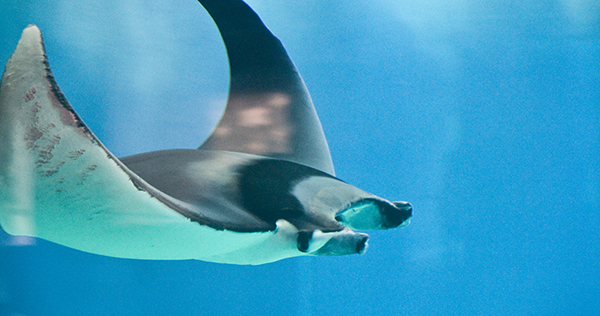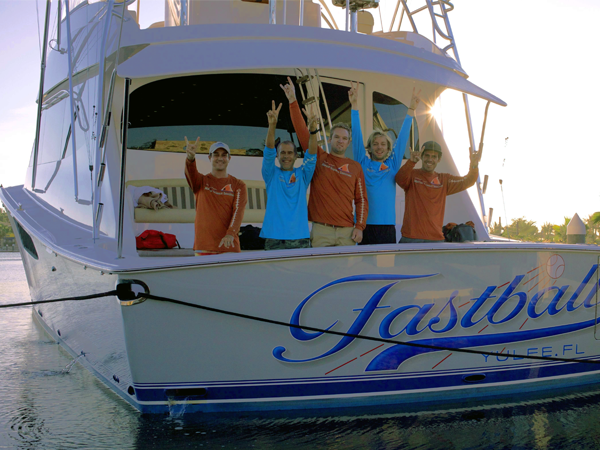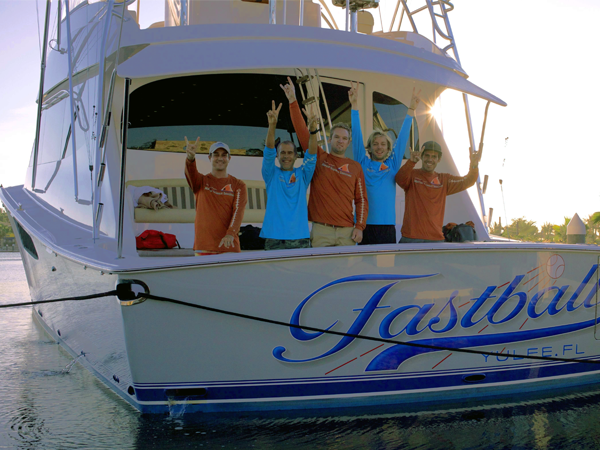 Mobula rays like this one pictured, can leap up to heights of six feet and higher. Scientists are trying to figure out why. Credit: Patrik Neckman.Baja is the world’s second largest peninsula and is a vast region of beauty and unknowns. This region is known for its crystal blue water teeming with billfish. It remains one of the few coasts that has yet to be fully explored. This Monday, UTMSI’s Dr. Brad Erisman embarks on a journey to uncover where the big fish are on the East Cape of Baja and why they are found there. Aided by a Marine Science Advisory Council Member, the fisheries team will be on the lookout for massive spawning aggregations of the Pacific Dog Snapper, Lutjanus novemfasciatus. If they are lucky they could chance upon to upwards of ten thousand of these large fish that can reach up to 80 pounds. In addition to their search for snapper they will also be surveying the mesophotic (without light) coral reefs for sharks and other large predatory fish. The team will also try to find feeding aggregations of Mobula rays, which are known for their fantastic aerial leaps. This expedition will help document where the spawning and feeding aggregation of the apex fish are in Baja so that Brad and his colleagues can start to unravel why they are located here and how to ensure that these fish are here to stay for future generations.
Mobula rays like this one pictured, can leap up to heights of six feet and higher. Scientists are trying to figure out why. Credit: Patrik Neckman.Baja is the world’s second largest peninsula and is a vast region of beauty and unknowns. This region is known for its crystal blue water teeming with billfish. It remains one of the few coasts that has yet to be fully explored. This Monday, UTMSI’s Dr. Brad Erisman embarks on a journey to uncover where the big fish are on the East Cape of Baja and why they are found there. Aided by a Marine Science Advisory Council Member, the fisheries team will be on the lookout for massive spawning aggregations of the Pacific Dog Snapper, Lutjanus novemfasciatus. If they are lucky they could chance upon to upwards of ten thousand of these large fish that can reach up to 80 pounds. In addition to their search for snapper they will also be surveying the mesophotic (without light) coral reefs for sharks and other large predatory fish. The team will also try to find feeding aggregations of Mobula rays, which are known for their fantastic aerial leaps. This expedition will help document where the spawning and feeding aggregation of the apex fish are in Baja so that Brad and his colleagues can start to unravel why they are located here and how to ensure that these fish are here to stay for future generations.  The research team: Brad Erisman, Alfredo Barroso, Timothy Rowell, Andrew Johnson, and David Castro aboard the Fastball before departure.
The research team: Brad Erisman, Alfredo Barroso, Timothy Rowell, Andrew Johnson, and David Castro aboard the Fastball before departure.More about the Fisheries Team
Brad Erisman: Assistant Professor of Fisheries Ecology at the University of Texas Marine Science Institute and Visiting Research Scientist at Scripps Institute of Oceanography. Dr. Erisman has been studying the biology and fisheries of coastal fishes from southern and Baja California for nearly 15 years. He leads several projects related to the conservation and management of fish spawning aggregations in the Gulf of California, is a member of the Species Survival Commission for the International Union for the Conservation of Nature, and is a board member of the Society for the Conservation of Reef Fish Aggregations.
David Castro: Dive Master from Cabo Pulmo, experienced naturalist and expert on fishes of Baja, has been collaborating with Brad for more than a decade on spawning aggregations in the Gulf of California; is the person shown in the famous “David and Goliath” photo that has been viewed by millions of people across the world that shows the massive school of jacks
Alfredo Barroso: World-renowned videographer who has provided underwater footage for National Geographic, BBC, and many other agencies; Famous for his videos of jumping mobula rays in several BBC documentaries; Part of the Emmy-award winning team for the “Art of Flight” documentary; experienced diver and naturalist who has been filming sharks, fish, whales, and other marine life in Baja for the past twenty years; Alfredo is a cameraman specializing in underwater wildlife. He has filmed for wildlife documentaries, commercials, scientific expeditions and for conservation organizations. His credits include work on productions made for National Geographic, Discovery Channel and BBC. His work is supported by his knowledge in natural history and his master's degree in General Biology.
Andrew Johnson: Postdoctoral Researcher at Scripps Institute of Oceanography. Dr. Johnson’s research focuses on the impacts of marine fisheries on fish populations and habitats. Since beginning his studies in marine biology in 2002, Dr. Johnson has traveled extensively, working with nine different fisheries in six countries gaining valuable experience in a range of fishing methods and management strategies. His doctorate at the School of Ocean Sciences, Bangor University (UK, 2012) focused on determining the habitat requirements of demersal fishes and how this knowledge can be used in MPA design. He is passionate about integrating sound ecological knowledge of fishes and ecosystems with the behaviour and patterns of fisheries in order to help predict the future impacts of current exploitation levels. He aims to use such synergies to aid the Gulf of California Marine Program in the design of future,
Timothy Rowell: PhD student, Scripps Institute of Oceanography. Timothy holds a master’s degree in Marine Sciences from the Universidad de Puerto Rico Mayagüez and is currently pursuing a PhD in Marine Biology at Scripps Institute of Oceanography under Dr. Octavio Aburto. His research involves using a suite of acoustic technologies to characterize fish spawning aggregations in the Gulf of California with an end goal of enhancing information available to stakeholders and resource managers. He is currently studying spawning aggregations of the Gulf Corvina (Golfo de Santa Clara) and Gulf Grouper (Cabo Pulmo) in partnership with the Gulf of California Marine Program.









